In fiction
- Greyfriars School, a fictional school which is the setting for Frank Richard's Billy Bunter stories
Greyfriars, Grayfriars or Gray Friars is a term for Franciscan Order of Friars Minor, in particular, the Conventual Franciscans. The term often refers to buildings or districts formerly associated with the order.

Greyfriars Church is an evangelical Anglican church, and former Franciscan friary, in the town centre of Reading in the English county of Berkshire. The church forms part of the Church of England's Diocese of Oxford.
Greyfriars was a monastic house in Bedford, England. The house of the Grey Friars was founded either by Mabilea de Plateshull or John St. John during the reign of King Edward II, and their church was dedicated on 3 November 1295. The date of the arrival of the Franciscans in the town is not known.

Greyfriars in Canterbury was the first Franciscan friary in England.
Greyfriars, in Bristol, England, was a Franciscan friary. The name Greyfriars derived from the grey robes worn by the friars. It was founded at some time before 1234, within the town walls and then moved to Lewin's Mead in 1250. The site included extensive gardens surrounded by a stone wall. Following the Dissolution of the Monasteries in the sixteenth century, the premises were leased to the town council in 1541, who desired to use the stone to make repairs to the town walls, and the harbour facilities. In succeeding centuries many different uses have been made of the site, which is currently occupied by an office block and part of Bristol Dental School.
Whitefriars was a Carmelite friary on the lower slopes of St Michael's Hill, Bristol, England. It was established in 1267; in subsequent centuries a friary church was built and extensive gardens developed. The establishment was dissolved in 1538.

Greyfriars is a country estate in Winchelsea, East Sussex, England. It contains a ruined medieval monastery and church and a 19th-century house.
Colchester Greyfriars, otherwise the Franciscan Friary, Colchester, was a Franciscan friary in Colchester, Essex, England, situated to the north of the town's east gate. It was founded sometime before 1237. In 1309 the friars received a grant of half an acre of land from Robert Fitzwalter, Lord Fitzwalter, on which he built their church. According to John Weever, the antiquarian, in his Ancient Funerall Monuments, Fitzwalter became a friar here himself in 1325, and was buried here.

The Greyfriars, Lincoln was a Franciscan friary in Lincolnshire, England. The surviving building is the remains of the infirmary of the friary, built of dressed stone and brick and dating from c.1230, with mid 19th century additions.

Boston Friary refers to any one of four friaries that existed in Boston, Lincolnshire, England.
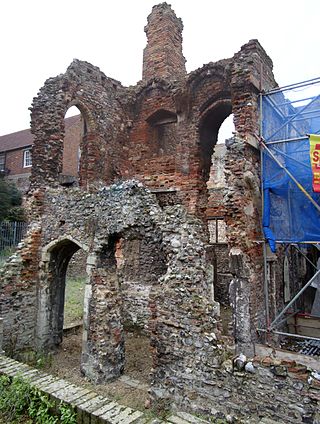
Great Yarmouth Grey Friary was a Franciscan monastic house in Great Yarmouth, Norfolk, England which was under the Custody of Cambridge.
Greyfriars Nottingham was a Franciscan friary in Nottinghamshire, England. It was founded c. 1224–1230, and dissolved in 1539 as part of King Henry VIII's Dissolution of the Monasteries. The site of the friary is now occupied by the Broadmarsh Shopping Centre.

Greyfriars, Dunwich was a Franciscan friary in Dunwich in the English county of Suffolk. The friary was founded before 1277 by Richard FitzJohn and his wife Alice and dissolved in 1538. The original site, which had 20 friars in 1277 when it first appears in records, was threatened by coastal erosion and the friary was moved inland in 1289.
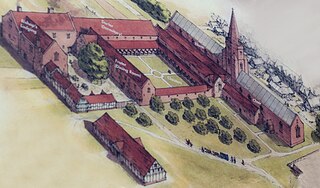
The Franciscan Friary was once a large estate located on the west side of Lichfield city centre in Staffordshire. The estate was built and inhabited by the Franciscan Friars from 1237. At one time the estate consisted of a large church, a cloister, dormitory lodge and a refectory building as well as many other domestic dwellings.

In London, the Greyfriars was a Conventual Franciscan friary that existed from 1225 to 1538 on a site at the North-West of the City of London by Newgate in the parish of St Nicholas in the Shambles. It was the second Franciscan religious house to be founded in the country. The establishment included a conventual church that was one of the largest in London; a studium or regional university; and an extensive library of logical and theological texts. It was an important intellectual centre in the early fourteenth century, rivalled only by Oxford University in status. Members of the community at that time included William of Ockham, Walter Chatton and Adam Wodeham. It flourished in the fourteenth and fifteenth century but was dissolved in 1538 at the instigation of Henry VIII as part of the Dissolution of the Monasteries. Christ's Hospital was founded in the old conventual buildings, and the church was rebuilt completely by Sir Christopher Wren as Christ Church Greyfriars after the original church was almost completely destroyed in the Great Fire of London of 1666. The building now standing on the site, designed by Arup Group Limited, is currently occupied by Merrill Lynch.
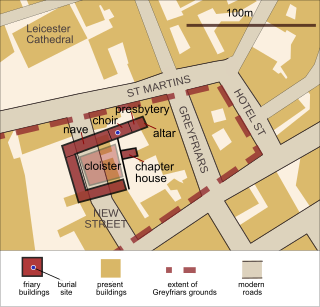
Greyfriars, Leicester, was a friary of the Order of Friars Minor, commonly known as the Franciscans, established on the west side of Leicester by 1250, and dissolved in 1538. Following dissolution the friary was demolished and the site levelled, subdivided, and developed over the following centuries. The locality has retained the name Greyfriars particularly in the streets named "Grey Friars", and the older "Friar Lane".
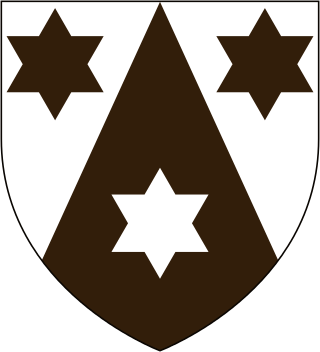
Nottingham Whitefriars is a former Carmelite monastery located in Nottingham, England.
Newark Friary, also known as Newark Greyfriars, and Newark Observant Friary, was a friary of the reformed "Observant Friars" of the Franciscan Order, located in the town of Newark, Nottinghamshire, England. The friary as founded by Henry Tudor c. 1499, and dissolved by his son, Henry VIII, in 1539.
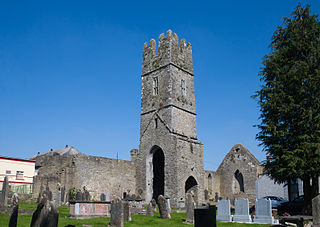
Roscrea Friary is a ruined medieval Franciscan friary and National Monument located in Roscrea, County Tipperary, Ireland. It is on Abbey Street, in the west end of Roscrea, on the north bank of the River Bunnow. The Friary was founded in the 15th century by Greyfriars (Franciscans) and later destroyed by British soldiers. What remains are the north and east walls and the bell-tower.

The Friary, formally known as Blessed Agnellus of Pisa Friary, formerly All Saints Convent or St John's Home is a centre of formation for the Franciscan Order of Friars Minor Conventual in Cowley, Oxford, England. The building was constructed in 1873 as the convent of the Anglican Society of All Saints Sisters of the Poor. It is situated between St Mary's Road and Cowley Road, next to St John's Care Home and Helen & Douglas House. The friary and its chapel are Grade II listed buildings.